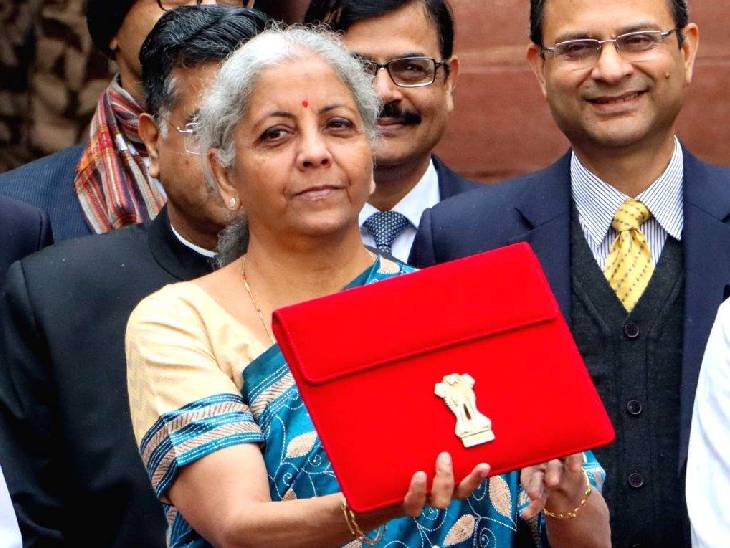
New Delhi7 hours ago
- Copy link

Being an election year, Finance Minister Nirmala Sitharaman presented the interim budget for the financial year 2025 on 1 February.
The Narendra Modi government may present the full budget for the financial year 2024-25 in the third week of July. In such a situation, the middle class and taxpayers are expected to get relief. According to Reuters, Modi 3.0 is considering lowering the income tax rate for those earning ₹10 lakh a year in its first budget.
Apart from this, the government is also planning to change the income tax slab. Being an election year, Finance Minister Nirmala Sitharaman presented the interim budget for the financial year 2025 on 1 February. At that time the Finance Minister did not make any major announcement regarding Income Tax.
The government may increase the tax exemption limit to ₹5 lakh
In the budget, the government can give this relief to special salaried class and middle class. At the same time, Moneycontrol quoted government sources as saying that the government may increase the income tax exemption limit from ₹3 lakh to ₹5 lakh in the budget. This change will apply only to those filing returns under the new tax regime.
Under the new tax regime, income up to Rs.3 lakh is tax-free
Suppose one’s annual income is Rs. 5 lakhs. In the new tax system, income up to Rs 3 lakh is tax free. In such a situation the person will be liable to pay tax at the rate of 5% on the remaining Rs 2 lakh. That means he has to pay tax of Rs 10,000. However, in this regime the government under Section 87A Rs. Exempts tax on income up to 7.5 lakhs.
There is a catch to this too. If you are a salaried person and your income exceeds Rs 7.5 lakh even by one rupee, you will have to pay tax not on one rupee but on Rs 4,50,001. Now after waiving the tax of Rs.3 lakh, the remaining Rs. 4,50,001 out of Rs. 3 lakhs at the rate of 5% Rs. 15,000 and the remaining Rs. 1 at 10 per cent on Rs. 15,000 has to be paid.
20% tax on income of ₹10 lakh in the old tax system
There are total 5 slabs of income tax in the old tax system. Income upto ₹ 2.5 lakh is tax free in this. Income between ₹2.5 lakh to ₹5 lakh is taxed at 5%. While 20% tax has to be paid on income of ₹5 lakh to ₹10 lakh. Income between ₹10 lakh to ₹20 lakh is taxed at 30% and those with income above ₹20 lakh have to pay 30% tax. While in the new tax system till now salary upto 7 lakh rupees comes under tax free.
According to reports, the budget is expected to change the revenue structure by up to Rs 10 lakh. Currently, a direct tax of 20 percent is levied on salary up to Rs 10 lakh. Government can change this. It can be reduced from 20% to 10% on income up to Rs 10 lakh. Apart from this, a change in the 30% tax slab is also being considered.
Understand the old tax system with an example
According to Bhopal CA Karthik Gupta, suppose someone has an annual income of Rs 5 lakh. In the old tax system, income up to Rs 2.5 lakh is tax free. In such a situation the person will be liable to pay tax at the rate of 5% on the remaining Rs 2.5 lakh. That is, he has to pay a tax of Rs 12,500, but the government waives this tax under Section 87A of the Income Tax Act.
It also has a screw. If your income exceeds Rs 5 lakh by Rs 1, then you will have to pay tax on Rs 2.5 lakh instead of Rs 1. Now Rs. 2.5 lakhs at the rate of 5% tax liability is Rs. 12,500 will be. The remaining Rs 1 will have to be taxed at the rate of 20%. That means 12,501 rupees tax has to be paid.
Possibility of revision within section 80C limits
Despite rising inflation, the government has not changed the 80C limit in the last 10 years. According to Archit Gupta, founder and CEO of Clear Tax, this change will not only help taxpayers deal with inflation, but also encourage savings and investments in savings schemes like ELSS, Tax Saver FDs, PPF.
80C to Rs. Can save tax on investments up to 1.5 lakhs
Many people start investing before the end of the financial year to save tax. Under Section 80C you can claim a deduction of Rs.1.5 lakh from your total income. In simple language, you can reduce your total taxable income through section 80C to Rs. Can reduce up to 1.50 lakhs. You can take advantage of it by investing in other schemes including term insurance, 5 year FD and senior citizen saving scheme.





